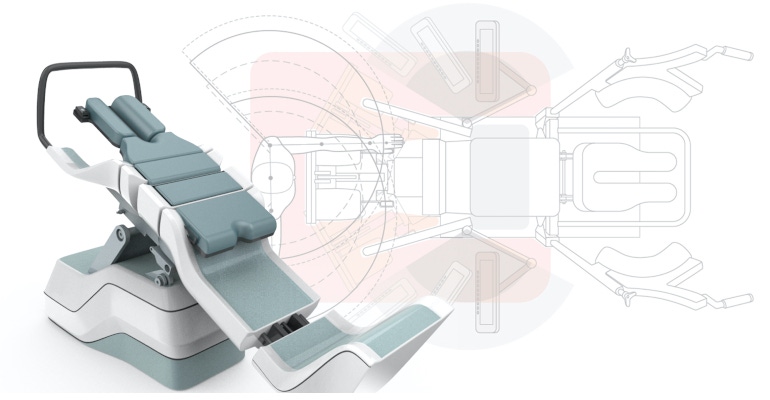These 7 insights could help your design engineering team save time and money.

From starting with defining product requirements to considering early buys of critical parts to helping overcome supply chain challenges, the product design process today is more complex and challenging than ever before. After decades of experience engaged in the development of hundreds of products in diverse industries, we have identified critical insights for projects and product design to help ensure the process is successful.
Following are the top seven insights to help guide successful product design.
1. Product requirements and project parameters need to be well defined
Here is a question: If you don’t know where you are going, how do you know when you get there? Successful products are the result of having a clear understanding of user needs or satisfying unique and valued user experience. The value proposition needs to be defined with cognizance of the competitive landscape. A fine balance of selecting the optimal feature set is required to avoid cost, schedule, and risk inflation. This is not just where the competitors’ products stand but also with anticipation as to where competitors can be anticipated to go next. Never blindly accept the notion that the market will be the same in 6 or 12 months or more. Your product definition needs to look at the forward landscape. This needs to be documented, including where and how the product is to be sold. All these factors have a bearing on the design effort to follow. Of course, one has to be nimble to respond to inevitable changes in the market or technology. However, deviations from the defined requirements should be made in thoughtful consideration of the impact.
It is also crucial to have a solid handle on how the project will be run. Too often, projects start with an incomplete or inaccurate understanding of the resources that will be required. This could be related to the budget or staffing. While staffing issues can be mitigated by using a product development consulting partner (like IPS) or contractors, doing so requires adequate funding. Likewise, product requirements need to be converted into design and engineering specifications to best define your project parameters.
2. Be objective about your core competencies in design and engineering
Everyone knows the phrase “jack of all trades, master of none.” It is important to be realistic in assessing your firm’s internal capabilities from an expertise perspective. If there is niche expertise required, how will you resolve this issue? One can try to directly hire additional talent, but that only makes sense if you can afford the time to recruit and on-board them as well as define whether you have a long-term, continuous need for their skills. Oftentimes, a consulting firm can be brought in with the needed niche expertise to complement your team. In such cases, it is not required to make a long-term commitment as one might do with direct staff.
3. The regulatory landscape needs to be clearly defined
It is important to understand the regulatory approvals that will be needed for the product. If it will be sold internationally, this might invoke the need for approvals from multiple agencies. Additionally, products sold in many countries may have subtle product differences (i.e., things like power supplies and cabling/connectorization).
In the case of medical products, this is a crucial decision to consciously be made early in the product development process. For example, what class of device will FDA consider for this device? Should you pursue a “health/wellness” implementation first and then introduce a “medical” product requiring FDA approval? This has a huge impact on the documentation for verification, risk mitigation, and testing.
4. Early prototyping and testing are mandatory
These days, everyone is familiar with rapid prototyping techniques for both mechanical and electrical systems. This is necessary and is a precursor for performing testing at the component and subsystem levels. Finding problems early is the goal. Best to plan for robust prototyping and testing in the project plans. Early prototypes that “look and feel” or “work like” the envisioned product are extremely helpful in getting customer input. If a company is seeking capital, investors will likely ask to see models that show and communicate intent and mitigate risk.
5. Consideration of the current supply chain challenges
Key things to consider here are designing for multiple sources. There may be a need to take extraordinary early action on risk buys for critical parts that can have extremely long or unpredictable lead times. If leveraging outside resources, be cognizant of potential bandwidth of the available design and regulatory test resources.
6. Identify and actively manage your risks
Successful product developers assess the project risks early to understand what may lead to variability in project/product cost and schedule. Additionally, one must be realistic about feasibility. If the product is an implementation of mature technology, then the project is execution driven (i.e., one can readily anticipate what it will take to accomplish the goals). However, if the product requires the development of new-to-the-world technology or manufacturing processes, it is best to recognize the risk associated with discovery that may require iterative steps and may embody the risk of feasibility.
7. Gain insights into the product roadmap
It is quite helpful to understand the product under consideration in the context of the company’s existing products or products envisioned in the future. It is hard to build a company around a “one and done” product. Successful companies realize that there may be a sequence of products upon which to build the business. Understanding the future anticipated product needs can help structure the product to help enable the future variants.
Those of us in product development are always anxious to get in and execute the project with lightning speed with cost in money and resources kept to a minimum. Product designers can run at top speed; however, doing so without realizing the above insights can cause a massive waste of time and money through errors and mistaken direction. This results in cost overruns and unmanageable schedule delays. Applying a balanced level of discipline gives the best shot at creating a product out of the process within cost and schedule constraints that meet the needs of end users and deliver the expected returns on investment.
About the Author(s)
You May Also Like





